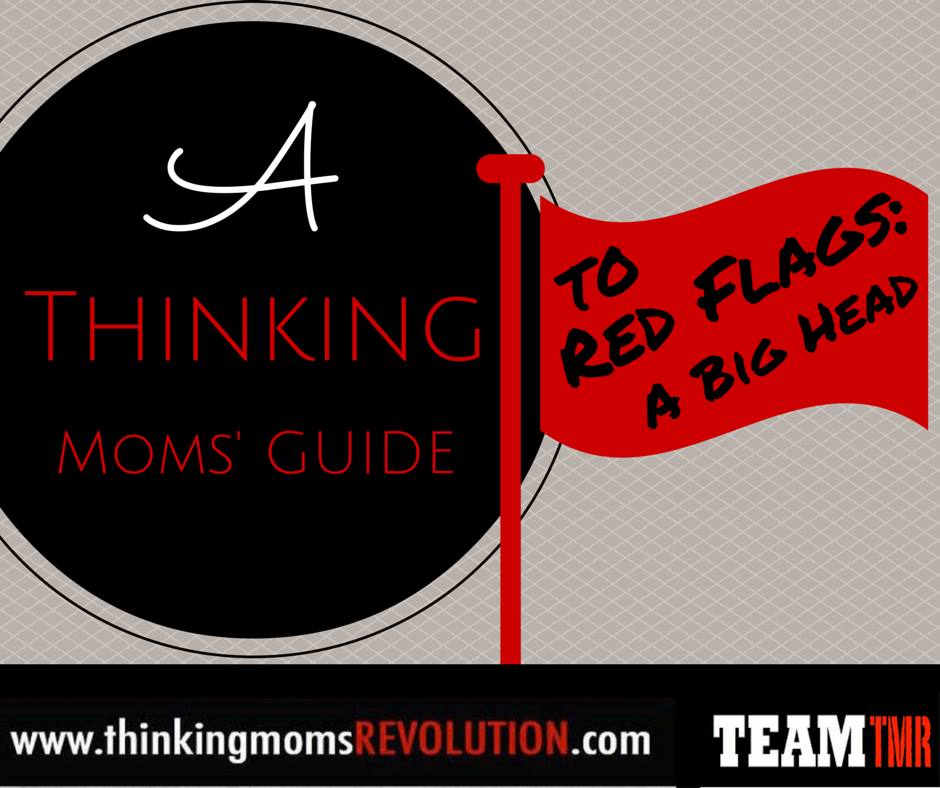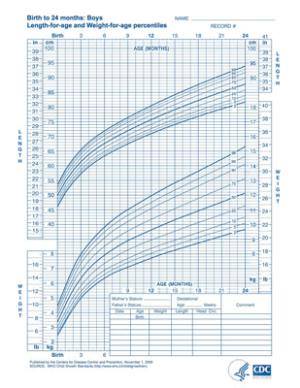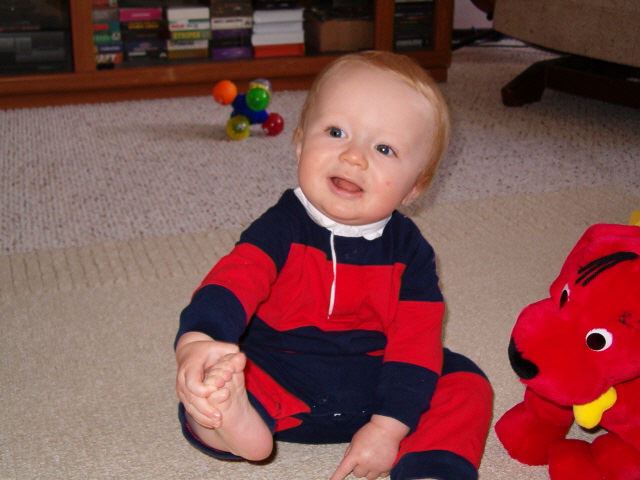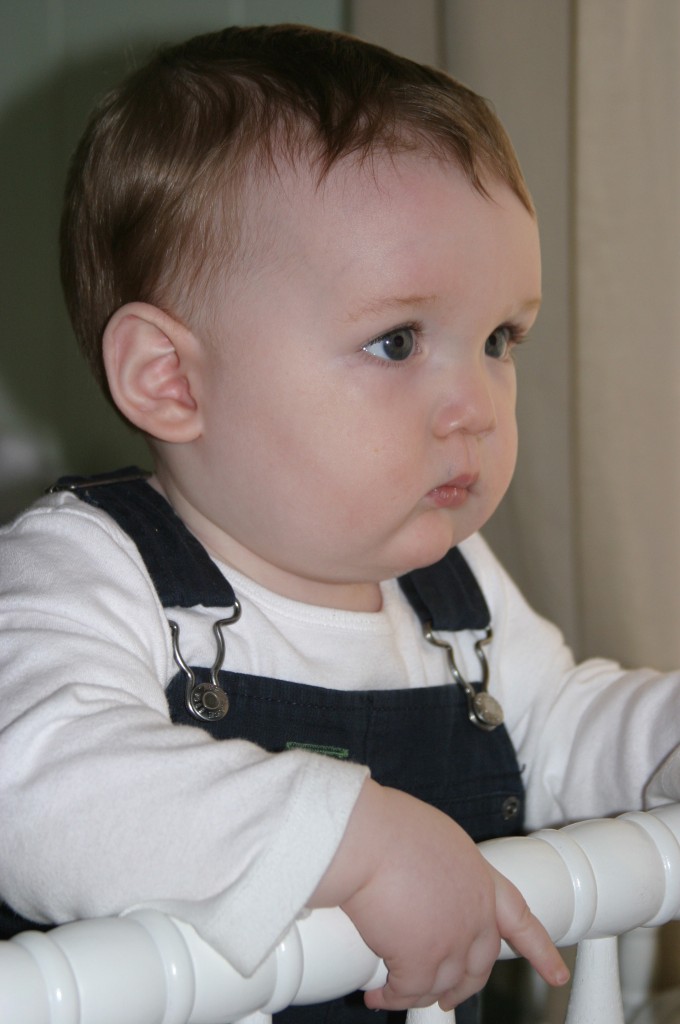 My children have big heads. They’ve had them since birth (ouch!), and it runs in our family. So when I read that large heads could be an early sign of autism, I was interested – given that four of my six children are on the spectrum, I figured this could be a clue.
My children have big heads. They’ve had them since birth (ouch!), and it runs in our family. So when I read that large heads could be an early sign of autism, I was interested – given that four of my six children are on the spectrum, I figured this could be a clue.
When your children are born, they are usually measured (weight, length and head circumference) and given a percentile rating. If there is a large difference between those percentile measurements, then there could be a cause for concern. For example, a baby measuring in the 5th percentile for weight and length, but above the 75th percentile for head circumference, would not be proportional. Caregivers should then be looking at possible reasons for this difference.
 One reason could simply be due to a genetic inclination to big heads – like in our family. There are several medical conditions which can affect your child’s head circumference, and doctors can perform various tests to rule these out.
One reason could simply be due to a genetic inclination to big heads – like in our family. There are several medical conditions which can affect your child’s head circumference, and doctors can perform various tests to rule these out.
As a red flag for autism, a large head circumference at birth is generally not a concern. The problem is when your child’s head grows suddenly, at a quicker rate than the rest of the body, or than the majority of their cohorts. Having a large head is medically known as megalocephaly or macrocephaly or it could be due to hydrocephaly.
Looking at studies examining a link between head circumference and autism showed divided opinions. It seemed to be an accepted fact that the two were often linked:
“The most replicated finding in autism neuroanatomy—a tendency to unusually large brains . . . .”
Yet some studies showed that there was no link between head circumference and autism. Thinking Moms will know that studies are not all designed equally, so it’s worth looking into the sample sizes, the ages, diagnoses and measurements used in order to compare studies.
It seems that it isn’t so much the size of the baby’s head at birth, or after three years of age (the age that some studies used to measure), that was linked to autism. The studies that did show a link seemed to be looking at children that had an increase in head circumference (percentile growth) during the first 3 to 36 months.
 “Rate of growth from birth to age 36 months was statistically significantly higher for the ASD group than the developmental delay group, with children with ASD showing a statistically significant increase in occipitofrontal circumference relative to norms between 7 and 10 months . . . .”
“Rate of growth from birth to age 36 months was statistically significantly higher for the ASD group than the developmental delay group, with children with ASD showing a statistically significant increase in occipitofrontal circumference relative to norms between 7 and 10 months . . . .”
One study concluded it was only associated if accelerated head growth happened at 3 months but not later, and it was at that time also associated with Intellectual Disability.
What can you do about it?
Should you be worried if your child (or a relative’s or friend’s child) suddenly seems to be developing a huge head? Well, regardless of what the studies showed (or didn’t), you have to ask yourself – “why is my child’s head suddenly growing more than the rest of him?”
First, start by bringing up your concern with your practitioner. If he or she seems unconcerned, you may want to seek a second opinion.
 If the head growth is accompanied by other red flags (see other TMR blogs on this), there is more reason for concern, so finding a practitioner who will listen to you and get to the root cause of the concern is important.
If the head growth is accompanied by other red flags (see other TMR blogs on this), there is more reason for concern, so finding a practitioner who will listen to you and get to the root cause of the concern is important.
Keep good records and request your child’s medical records to determine the onset of the sudden head growth. Did it correlate to a change in the child’s environment, a round of vaccinations, an illness? All of these can be clues into the root cause of the issues.
Finally, if your mommy “siren” is going off inside, do not hesitate to ask for a referral to a neurologist and request additional testing including MRI or other diagnostic testing. Rapid head growth could be something BIG or it could be little to be concerned with. You as a parent must advocate for your child using all the information that you know about how the child is acting or feeling. Few doctors can gather enough information in a 15-minute appointment to deduce the seriousness of your concerns. You must give them this context and push for further testing if you feel it is warranted.
Some links for further research:
~ Peacemaker
Peacemaker is a mum to six children. Three of her girls have been diagnosed with Asperger’s, and one of her sons has severe autism. Their quirky family lives in Australia, where every day presents a new dietary challenge. When she’s not busy homeschooling her kids, Peacemaker can be found researching autism, or reading a relaxing autism biography.
For more by Peacemaker, click here.
For more Red Flags, click here.

















My LO HC At birth was at 89th percentile. He is 6 mos now, HC is 97th while weight and height is at 5th and 9th percentile respectively. Do I have to be worried?
My 5 years old daughter has pretty big head and forehead larger than mine but she is pretty fine and highly intelligent forher age at 5 she’s in the 1st grade,so no worries some people just have different bone structure when she’s was much younger I uses to be worried but now I just understand that that so natural,
She was born premie very tinny but she weigh 30 kg and very tall.mummies no worries all is fn.
It ISN’T “fine” for many children today. Their brains are inflamed, and that inflammation causes their heads to grow abnormally quickly. If your daughter’s head is genetically destined to be bigger than most that is great, but that certainly isn’t the case for every child with a big head.
my son is 2 years old. his weight is 16 kg. his head is 20.5 inches. is it normal
According to this chart, his head circumference is definitely in the top 3% of children his age. That could be normal, but it may indicate reason for concern. https://www.cdc.gov/growthcharts/html_charts/hcageinf.htm
My son is almost 4 months. His weight and height are 1 percentile for his age. His head is 75 percentile. He goes to a neurosurgeon on Tuesday. He was premie. It’s scary because I don’t know what’s going on.
My child is 17 months old and his head circumference is 48 cm. Is it normal or should I approach some specialist ?
If your child’s head circumference has stayed at the same percentile, there is far less likelihood that its size is problematic. It’s when the circumference grows disproportionately, and a child’s head circumference jumps suddenly from the 35th to the 80th percentile, for instance, that red flags should be raised.
My 3 month old grandson head has grown larger than his body, my daughter-in-law is a vegan , could this be why
No, there is nothing about veganism that would do that. Different children have different susceptibilities, and veganism may not be healthy for your grandson even if it is healthy for your daughter-in-law, but that would not promote disproportionate head growth.
My 5 and 1/2 month old grandson is in the 90th percentile on head size but only 4% on weight and 11% on height. My daughter is breastfeeding him and she is vegan. Is there a link?
I have a very large forehead I have a range of symptoms that indicate autism, but when I bring this up to my psychiatrist or my family I am told there is no way I have autism. It’s frustrating me because I match many of the symptoms and have a large head. I am 26 years old and scared I am autistic please help.
Hi
my daughter is 15 months old and I’m concerned about her being on the spectrum.
She’s still not walking, only cruises, doesn’t talk (she picks mama, dada and no for a few days, then stop for a month and starts again for a while…) but she babbles a lot.
She doesn’t point but waves and clap, the name response is iffy.
I recently read something about the relation between HC and autism. My English is not good enough to read medical papers tough.
My DD was born with an RCIU so she only weighted 2,3 kg for 48 cm and 32,5 cm for HC. She was at the bottom of the charts for everything.
After 3 months tough, she catches up on everything, ended on on the 90% for height, 75% for weight and 95% for HC.
now at 15 months, she has 49 cm for HC witch is 96% percentile in France but way above the charts in the US.
I’m really worried about this.
Do you think she matches the pattern described in the study or does she fall in the “homogenous growth” category
Thanks for your help
What is her percentile for height these days? It could be homogeneous growth if she is tall for her age. But given the possible delays, you might want to see if there are some books available in a language you understand. Kenneth Bock’s book Healing the New Childhood Epidemics might be a good place to start. It can’t hurt to be aware of the issues you may have to deal with.
My 4year old girl has a pretty big head and I’m worried it will affect her self-esteem. As a mom it embarrasses me and always ensures that she covers it up with a hat. Her hair texture is so poor it cannot completely cover the scalp. Please help!
She’s talking about autism and other birth defects and you are talking about her self esteem. She’s ill fit for this conversation, there is nothing to “help” you with. Be thankful.
Your shame and embarrassment are going to cause a lot more self esteem issues than her big head!
Did you just really say your daughter’s appearance embarrasses you? Wow lady you have problems and I feel really bad for your little girl.
My son’s head size is big so any one knows specialist Dr.pls tell me 9812436427 it’s my contact pls tell me anyone
My son is autistic and has a very large head too. He’s always been 99th percentile…from birth to now. His weight and height percentiles have always been high as well. They ran lots of tests on his head when he was initially born, but nothing came from any of them. My second child, two months old, has a normal sized head…so I’ll be curious to see if the two are correlated in my family.
Early research on this, done by Dr. Eric Courchesne, was actually used to try to argue that autism began in the womb, and therefore environment, and in particular vaccines, had nothing to do with autism.
Some of Courchesne’s studies:
http://www.ncbi.nlm.nih.gov/pubmed/12865374
http://jama.jamanetwork.com/article.aspx?articleid=1104609
I used to work in a brain imaging lab at UCSD which collaborated with Dr. Courchesne. Years ago I confronted him about his findings and his argument that this was evidence that autism began in the womb, and asked him to comment on the more recent research which has actually found that exposure to mercury (a component of the preservative Thimerosal found in many earlier childhood vaccines, and still used in many of today’s flu vaccines in the US) can directly cause enlarged brains in animal models. He never responded to my query.
You might be interested in the following study:
http://www.ncbi.nlm.nih.gov/pubmed/20628439
This description is from SafeMinds:
http://www.safeminds.org/wp-content/uploads/2013/04/ANE-Press-Release.pdf
“The vaccinated monkeys showed increased brain growth, which the authors theorize may arise from the inability to prune neurons. Larger head size is a hallmark of human infants who later develop autism. The vaccinated primates also showed a different rate of maturation of the amygdala section of the brain than the non-vaccinated monkeys. Amygdala dysfunction has been long implicated in autism. The amygdala region is responsible for emotions, memory and learning. Individuals with autism often struggle in these areas.”
Thanks for the info, David! I think the larger head size is probably going to turn out to be more due to inflammation than the inability to prune neurons, at least partly because some children’s head grow SO quickly and they are not pruning that much in the beginning. Brain inflammation is also a hallmark of autism. Of course, the inflammation and inability to prune are probably related, so it’s quite possibly a combination of the two.
Thays great but, proof? Science it up.. Either prove or disprove your suggestion..
“Science it up”? 😀 First off, whom are you talking to, David or myself? And secondly, which particular “suggestion” are you talking about? If you’re talking about the inflammation angle, check out our series on the science proving that vaccines can cause autism. “Part 1” in that series is all about the inflammation that is a hallmark of autism: https://thinkingmomsrevolution.com/vaccines-cause-autism-part-1-immune-activation-autism/
My baby had a head circumference about 97th percentile while she was “falling off the bottom of the growth chart” for length and weight — at about 5 or 6 months. She was “different from the beginning” after a difficult (brain-injuring) birth and 3 days of IV antibiotics in NICU (guaranteed to cause serious gut flora problems which may never be fully fixable) but started a serious regression at about 13 months. Fortunately, she turned around with lots of help from alternative practitioners and the GAPS diet, and is now an “almost normal” 13-year-old though she continues to have some learning weaknesses and a long list of stubborn health problems that the docs can’t seem to untangle and resolve.
A psychiatrist specializing in autistic kids told me that she thought autistic-to-be babies don’t go through the normal neuronal “pruning process.” I wonder if this could be the cause of their big heads.
In any case, years ago when I first read about all this, I tried to “do the math” and according to my calculations, a baby with a very big head had about a 1 in 18 chance of later being diagnosed autistic. Perhaps some of the big-headed babies who don’t become fully autistic end up on the spectrum (including ADHD diagnosis).
For big-headed babies, one of the first things I’d suggest is that parents have a consultation with a GAPS practitioner. A high-powered probiotic plus a GAPS diet from the very beginning could make a huge difference in baby’s “outcome” if a gut flora imbalance is part of the picture.
I don’t think neuronal pruning is likely to explain it. Synaptic density doesn’t peak in the frontal gyrus until three and a half. http://chronicle.uchicago.edu/980219/huttenlocher.shtml Many children have significantly larger than average heads long before that. Hard to tell exactly what happens with the number of neurons themselves. They are pruned as well, but they don’t seem to peak until age seven. http://www.intropsych.com/ch02_human_nervous_system/neural_evolution.html In addition, people with neurological difficulties often have myelination issues. Essentially, the thicker the myelin, the better the transmission of signals. If the myelin is thicker, you would think that would take up MORE room.
Interesting! two of my kids have BIG but adorable heads. One is diagnosed ASD, the other is just 12 months old. On an unrelated note, what are vax laws in Australia? Is it mandatory?
Jennifer,
Australian vaccination regulations are currently being amended. Previously, you could request a GP (doctor) to sign off on a Conscientious Objection form (which covered Philosophical as well as Religious reasons for not vaccinating) which exempted your child from vaccines. Australia had a childhood register for children up to the age of 7, and the Baby Bonus payment (Federal Government incentive payment) was linked to either being up to date on vaccines, or having a CO form in place.
The new regulations (assuming they are voted in) will be that all children will have a register, and they are also starting an adult one. All exemption forms are being scrapped unless it is Medical (good luck finding a way to get one of those). Yearly Family supplement payments, and Childcare Payments, are also being linked to having a child’s vaccinations up to date. The newspapers report that the ‘average’ family will lose upwards of $3500 if they choose not to vaccinate.
The new regulations were brought in by the Murdoch newspaper empire, who last year also brought in a “No Jab, No Play” policy which means that children need to be up to date or they are not allowed to attend Daycare. That policy decision (the newspaper comes up with them, the government makes it happen) was not terribly popular even with medical bodies, so has had slight amendments - for example, some daycares may just need to request to see a child’s vaccination status (according to the government register) or can accept Conscientious Objection forms (which as of 1st January 2016 will probably no longer be valid).
So while it may not be mandatory, that day is not far off at all (for children or adults).
~ Peacemaker